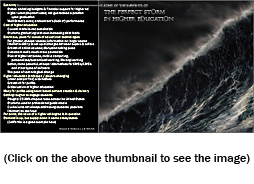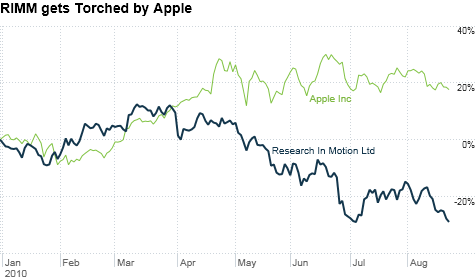EDUCAUSE 2010 Day 2: Hamel, Gates, lecture capture, and tough publishers — from InsideHigherEd.com by Joshua Kim
From DSC:
Especially of interest here to me was the item about TechSmith and Sonic Foundry…veerrry interesting. Also, administrators, deans, and department chairpersons NEED to hear Hamel’s presentation/thoughts. To me, it held some of the most lasting value from any presentation that was offered online yesterday.
Gary emphasized the need for us to keep reinventing ourselves — and I would add, given the pace of change, this is just as true of each of us as individuals as our collective organizations. He noted the accelerating pace of change, that knowledge itself is changing…and that most organizations today were never built to handle this kind of change. He stressed the need to be more nimble.
The web:
- Dematerializes
- Disintegrates
- Disintermedites
- Democratizes
Too often organizational change is episodic, convulsive — reacting to a time of crisis. (From DSC: Read…when the organization has been broadsided.)
We are broadsided not because we couldn’t see things coming down the pike, but because those things were not pallatable to us….hmmm…sounds of online learning and web-based collaboration are ringing in my ears…
Try to imagine the unimaginable.












